The NVIDIA GeForce RTX 2060 6GB Founders Edition Review: Not Quite Mainstream
by Nate Oh on January 7, 2019 9:00 AM ESTCompute & Synthetics
Shifting gears, we'll look at the compute and synthetic aspects of the RTX 2060 (6GB). As a cut-down configuration of the TU106 GPU found in the RTX 2070, we should expect a similar progression in results.
Starting off with GEMM tests, the RTX 2070's tensor cores are pulled into action with half-precision matrix multiplication, though using binaries originally compiled for Volta. Because Turing is backwards compatible and in the same compute capability family as Volta (sm_75 compared to Volta's sm_70), the benchmark continues to work out-of-the-box, though without any particular Turing optimizations.
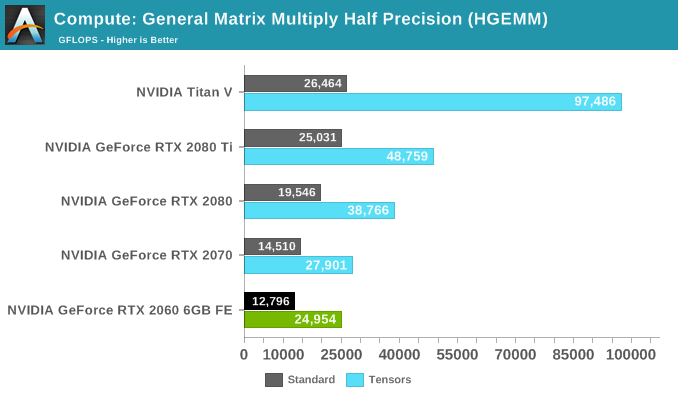
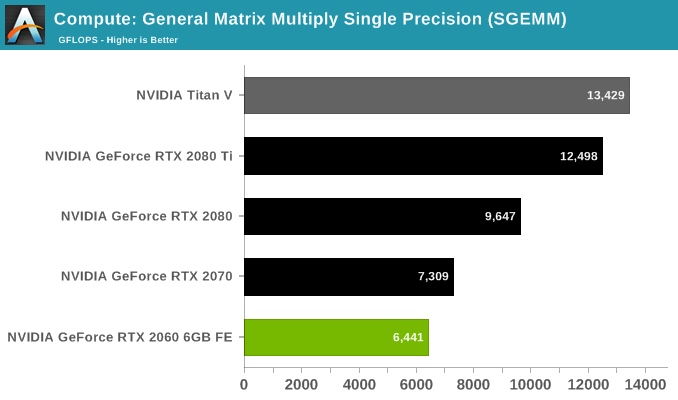
For Turing-based GeForce, FP32 accumulation on tensors is capped at half-speed, thus resulting in the observed halved performance. Aside from product segmentation, that higher-precision mode is primarily for deep learning training purposes, something that GeForce cards wouldn't be doing in games or consumer tasks.
Moving on, we have CompuBench 2.0, the latest iteration of Kishonti's GPU compute benchmark suite offers a wide array of different practical compute workloads, and we’ve decided to focus on level set segmentation, optical flow modeling, and N-Body physics simulations.
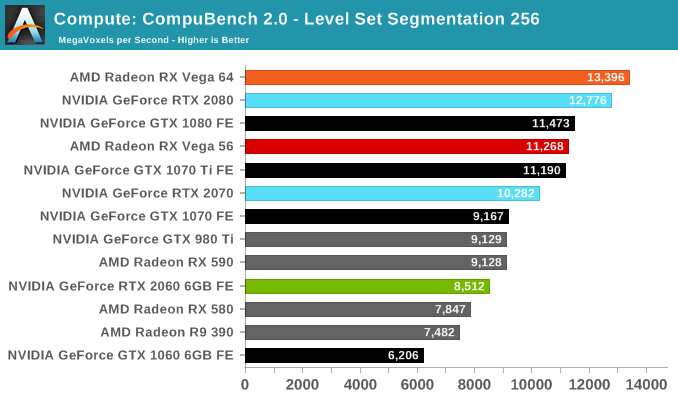
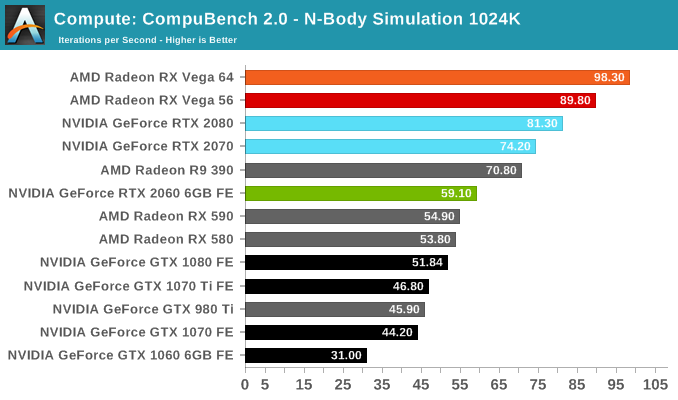
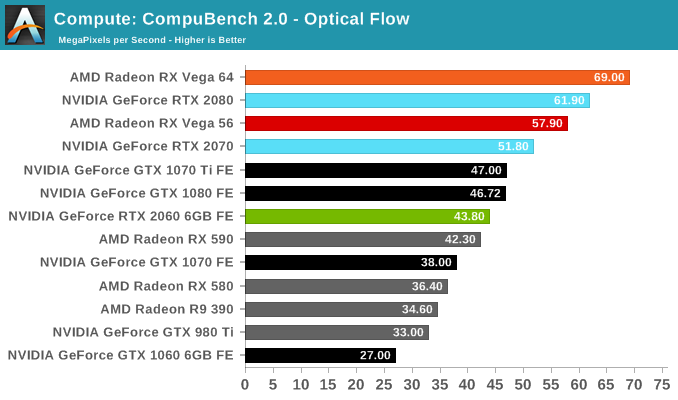
Moving on, we'll also look at single precision floating point performance with FAHBench, the official Folding @ Home benchmark. Folding @ Home is the popular Stanford-backed research and distributed computing initiative that has work distributed to millions of volunteer computers over the internet, each of which is responsible for a tiny slice of a protein folding simulation. FAHBench can test both single precision and double precision floating point performance, with single precision being the most useful metric for most consumer cards due to their low double precision performance.
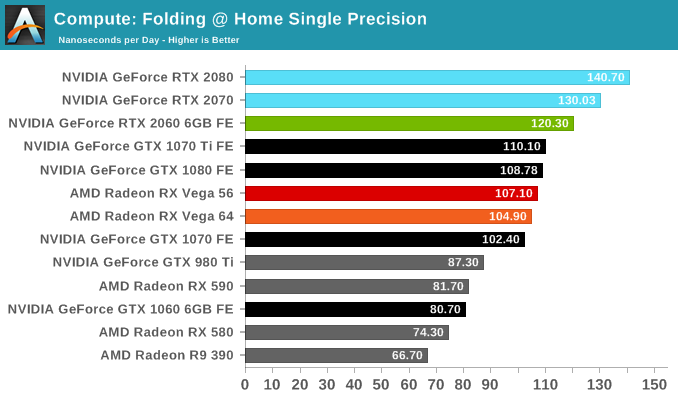
Next is Geekbench 4's GPU compute suite. A multi-faceted test suite, Geekbench 4 runs seven different GPU sub-tests, ranging from face detection to FFTs, and then averages out their scores via their geometric mean. As a result Geekbench 4 isn't testing any one workload, but rather is an average of many different basic workloads.
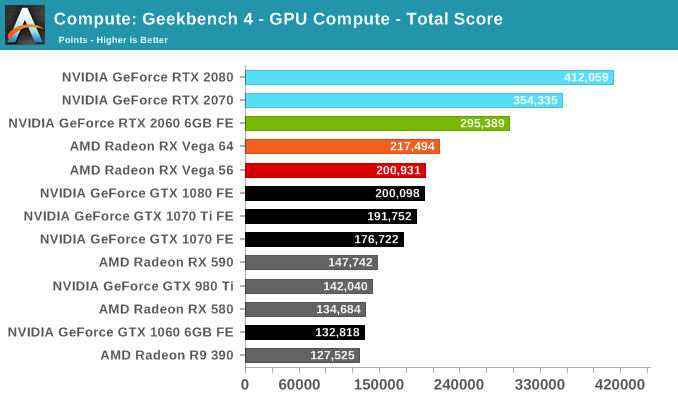
We'll also take a quick look at tessellation performance.
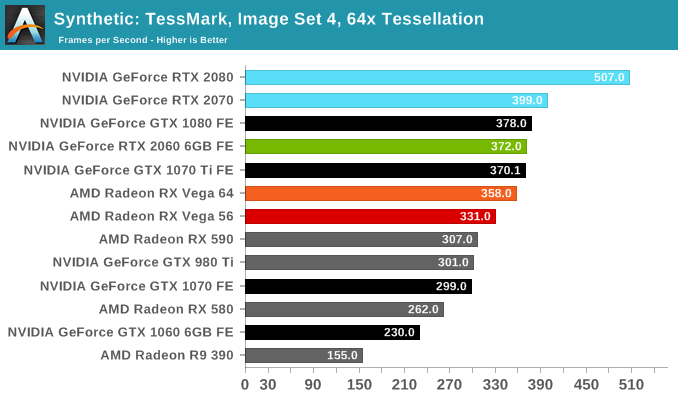
Finally, for looking at texel and pixel fillrate, we have the Beyond3D Test Suite. This test offers a slew of additional tests – many of which use behind the scenes or in our earlier architectural analysis – but for now we’ll stick to simple pixel and texel fillrates.
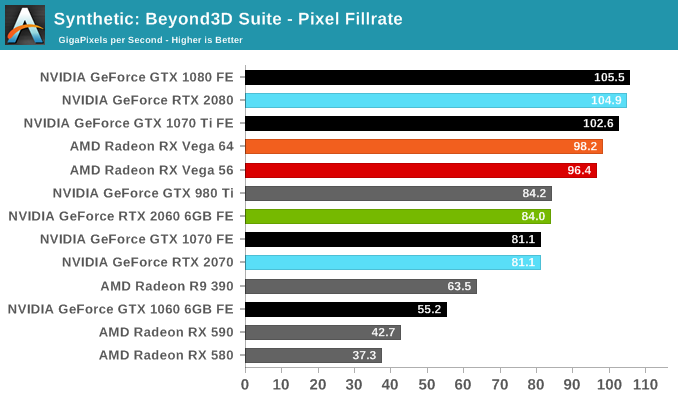
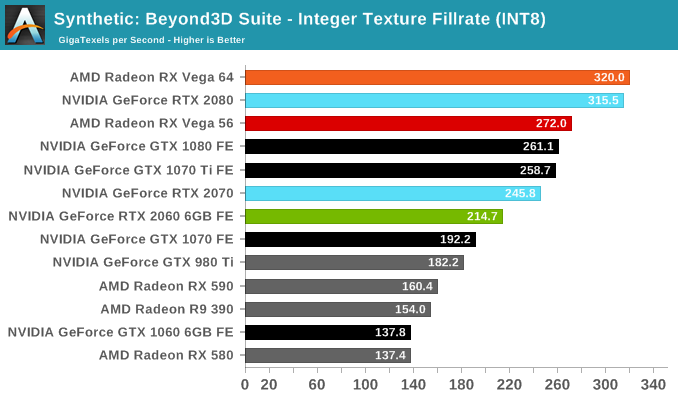










134 Comments
View All Comments
CiccioB - Thursday, January 10, 2019 - link
I would like to remind you that when the 4K interest begun there were cards like the 980TI and the Fury, both unable to cope with such a resolution.Did you ever write a single sentence against the fact that 4K was a gimmick useless to most people because it was too expensive to support?
You may know that if you want to get to a point you have to start walking towards it. If you never start, you'll never reach it.
nvidia started before any other one in the market. You find it a gimmick move. I find it real innovation. Does it costs too much for you? Yes, also Plasma panels had 4 zeros in their price tag at the beginning, but a certain point I could get one myself without going bankruptcy.
AMD and Intel will come to the ray tracing table sooner than you think (that is next generation for AMD after Navi that is already finalized without the new computing units)
saiga6360 - Thursday, January 10, 2019 - link
Here's the problem with that comparison, 4K is not simply about gaming while ray tracing is. 4K started in the movie industry, then home video, then finally games. There is a trend that the gaming industry couldn't avoid if it tried so yes, nvidia started it but its not like nobody was that surprised and many thought AMD will soon follow. Ray tracing in real time is a technical feat that not everyone will get on board right away. I do applaud nvidia for starting it but it's too expensive and that's a harder barrier to entry than 4K ever was.maroon1 - Monday, January 7, 2019 - link
wolfenstein 2 Uber texture is waste of memory. It does not look any different compared to ultrahttp://m.hardocp.com/article/2017/11/13/wolfenstei...
Quote from this review
" We also noticed no visual difference using "Uber" versus "Ultra" Image Streaming unfortunately. In the end, it’s probably not worth it and best just to use the "Ultra" setting for the best experience."
sing_electric - Monday, January 7, 2019 - link
I wish the GPU pricing comparison charts included a relative performance index (even if it was something like the simple arithmetic mean of all the scores in the review).The 2060 looks like it's in a "sweet spot" for performance if you want to spend more less than $500 but are willing to spend more than $200, but you can't really tell that from the chart (though if you read the whole review it's clear). Spending the extra $80 to go from a 1060/RX 580 to a RX 590 doesn't net you much performance, OTOH, going from the $280 RX 580 to the $350 2060 gets you a very significant boost in performance.
Semel - Monday, January 7, 2019 - link
"11% faster than the RX Vega 56 at 1440p/1080p, "A two fans card is faster than a terrible, underperforming due to a bad one fan design reference Vega card. Shocker.
Now get a proepr Vega 56 card, undervolt it and OC it. And compare to OCed 2060.
YOu are in for a surprise.
CiccioB - Monday, January 7, 2019 - link
A GPU born for the computational task, with 480mm^2 of silicon thought for that, 8GB of expensive HBM and consuming 120W more being powned by a chip in the x60 class sold for the same price (and despite the silicon not all being used and benchmarked for the today games, the latter still preforms better, let's see when RTX compute units and tensor will be used for other tasks like ray tracing but also DLSS, AI and any other kind of effects. And do not forget about mesh shading).I wonder how low the price of that crap should go down before someone consider it a good deal.
Vega chip failed miserably at its aim of making any competition to Pascal in both games, prosumer and professional market, now with this new cutted Turing chip Vega completely looses any meaning of even being produced. Each sold pieces is a rob to AMD's cash coffin and it will be EOF sooner than later.
The problem for AMD is that until Navi they will have nothing to go against Turing (the 590 launch is a joke, can't you really thing a company that is serious in this market can do that, can you?) and will constantly loose money in the graphics division. And if Navi is not launched soon enough, they will lose a lot of money the more GPU they (under)sell. If launched too early they will loose money for using a not mature enough PP with lower yields (and boosting the voltage isn't really going to produce a #poorvolta(ge) device even at 7nm). These are the problem of being an underdog that needs latest expensive technological applications to create something that can vaguely being considered decent with respect to the competition.
Let's hope Navi is not a flop as Polaris, or also the generation after Turing will cost even more, after the price have already gone up with Kepler, Maxwell and Pascal.
Great job this GCN architecture! Great job Koduri!
nevcairiel - Monday, January 7, 2019 - link
Comparing two bog standard reference cards is perfectly valid. If AMD wanted to shine there, they should've done a better job.Retycint - Tuesday, January 8, 2019 - link
Exactly. AMD shouldn't have pushed the Vega series so far past the performance/voltage sweet spot in the first place.sing_electric - Tuesday, January 8, 2019 - link
I mean, at that point, then, why bother releasing it? If you look at perf/watt, it's not really much of an improvement over Polaris.D. Lister - Monday, January 14, 2019 - link
@Semel: "...get a proepr Vega 56 card, undervolt it..."Why is AMD so bad at setting the voltage in their GPUs? How good their products can be if they can't even properly do something that even the average Joe weekend overclocker can figure out?
Answer to the first question is: "They aren't. AMD sets those voltages because they know it is necessary to keep the GPU stable under load. So, when you think yourself more clever than a multi billion dollar tech giant and undervolt a Radeon, you make it less reliable outside of scripted benchmark runs.